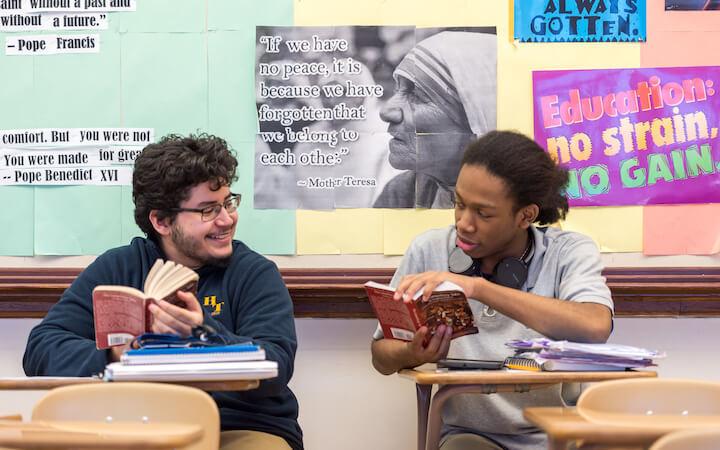My classroom layout matched the colorful, vibrant personalities of my students. And similar to the lovely, ever-changing, adolescent personality, my classroom was constantly changing. I am a big fan of the flex model, particularly for older students because it gives teachers more flexibility to pull groups or individual students. I constantly adjusted my groups to keep instruction "fresh," as my kids called it. My flexible groups also removed the stigma that can sometimes accompany ability grouping.
I cherished my small-group time, not only because it provided the opportunity to reteach and scaffold lessons appropriately, but also because it gave me the time to be present with my students and connect on a personal level. Small-group time allowed me to add variety and a spark of joy to the sometimes mundane tasks of reading and writing. How?
Here are three small-group ideas that were a hit in my secondary classroom to keep students engaged, even in the dark days of December.
Writing Workshops
Who says that the writing process has to be long and boring? When my students were working on a process paper, my groups were not only based on writing proficiency but also where students were in the writing process. My students always wrote three drafts of their process papers, and the majority of learning happened during the editing processes between drafts. When students were finished with their first draft and in the process of editing their work, I would arrange my desks into five to seven workstations. At each station, students engaged with specific instructions and areas of focus. For example, one station would ask students to analyze their partner's thesis statement. Another station would focus solely on analyzing a writer's point of view. Another station would focus on creating proper works cited pages.
At my table (the teacher's station), my students had the opportunity to ask specific questions or focus on one section of their paper with me. This served two purposes: one, it forced students to reflect on their own work and choose one area to discuss; and two, it gave me the opportunity to work one-on-one with all 34 students in my class. As my fellow English teachers know, the grading load is real, so this activity allowed me to quickly assess (in class!) my students' proficiency in the writing process.
Book Clubs (Literature Circles)
There are few greater things in this world (except for maybe chocolate) than student excitement and deep conversation over literature. When I first started teaching, I was shocked when I heard students grumble about how much they hated to read. I am convinced that many students believe they hate reading because they have never discovered a book they love. To combat this belief, I dove into creating book clubs in my classroom.
Students chose a book off a list I created comprised of five to eight books based on Lexile levels, interest, and the unit we were studying. Then, throughout the unit, students in my group would have the opportunity to discuss major themes, events, and ties to society with each other. I started by assigning guided questions and basic conversation starters. It was exciting to see that later in the year, students were eager to engage with student-led discussions, deep-dives into themes, and articles related to the book. It was so much fun, and so rewarding to be able to simply sit and listen to my students excitedly talk about their shared novel.
The Great Debate
Students often have the most insightful things to say but are too shy to say them in front of the entire class. To spice up nonfiction articles and discussion in my classroom, I created groups of students I knew had different opinions on "hot topic" issues and had them discuss and debate in a small group with me.
There are great software programs that generate articles of the day as well as leveled text based on students' Lexile levels. These are an invaluable resource because they provide the opportunity for all students to participate and have their voice heard, but at a level they can understand and relate to.
These are just a few ideas of mixing up small-group instruction at the secondary level. Do you have any ideas or activities that have worked well for you? Let us know, post below!
 Alliance for Catholic Education
Alliance for Catholic Education
